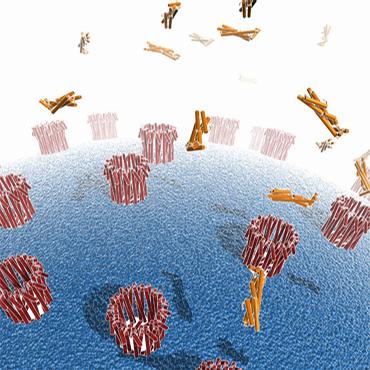Team:Paris/Addressing overview2
From 2009.igem.org
iGEM > Paris > Adressing > ClyA
A. ClyA
Le premier paragraphe est faux... ClyA n'a rien avoir avec le fait de faire de la communication. C'est juste un moyen d'adresser quelque chose dans la membrane externe. On a choisi clyA car des études ont montrées que cette protéine se trouve dans les OMVs et qu'elle y est sans doute spécifiquement adressée pour jouer son role de facteur de virulence... Par ailleurs il faut corriger l'anglais de cette partie!
We work on the cell-cell communication using vesicle, but in a first time we need to adress a signal on outer membrane. So we have to find something which can go from the cytoplasm to vesicles, then can be exported a signal transduction through the vesicle when its fuse with the target cells. ClyA seems to have an interesting ways to success in these functions, in fact ClyA in E.Coli in high expression in OMV, and it’s one of the proteins that can pass the cytoplasm to the persiplasm and integrated to vesicle.
However there are some inconvenient because ClyA is an alpha-PFT for Pore Forming Toxins. PFTs are potent virulence factors class starting in a soluble form to an outer membrane-integrated pore. They exhibit their toxic effect either by membrane permeability barrier destruction or by toxic components delivery through the pores which forming by several assembly 8 or 13 ClyA subunits. PFTs can be subdivided into two classes; α-PFTs and β-PFTs, depending on the suspected mode of membrane integration, either by α-helical or β-sheet elements.
So some article show that E.Coli K12 using this ClyA to “destruct” other bacteria or eucaryot cell. But this virulence was not show in same strain.
In some article, it’s fused to GFP in order to observed the vesicle, so we think the fusion of ClyA with a peptide signal can induct the receptor when the vesicle fusion to its cell target liberate the Cly A in the target cell. And it's this information which we will exploit for our project. In fact we will fuse ClyA to RFP in our case in order to observe if our ClyA are in our vesicle.[article 1] C'est la phrase la plus importante... C'est bien de dire ce qu'il y a au dessus, mais ca doit venir après et être juste mentionné comme quelque chose à quoi il faut potentiellement faire attention pour des applications de notre projet
AVANTAGE
- ClyA can be used to co-localize fully functional heterologous proteins directly in bacterial OMVs
-We can fuse GFP to the C or N term of Cly A, to track OMVs easily.
-ClyA is capable of co-localizing a variety of structurally diverse fusion partners to the surface of E. coli and their released vesicles, but only when the periplasmic disulfide bond-forming machinery was present ,it’s makes OMVs an ideal structure to transport hydrophobic compounds like membrane proteins into the host.
-Cly A confers vesicle binding to and invasion of host cells.[article 1] Est-ce que ceci a réellement été montré? Si c'est le cas, il faut une référence. Il faut d'ailleurs des références pour toutes les affirmations que vous faites.
-ClyA was significantly enriched in OMVs relative to other lumenal and membrane bound OMV proteins.
DRAWBACK
-Cly A is cytolitic and a PFT-a so it’s virulent; it can form pore in cell target. But we find that ClyA is virulent for mammalian cell or erythrocytes, because of its strong interaction with choloesterol which constitute mammalian cell membrane. For the virulence in bacteria cell we think that it’s not possible because there is no cholesterol in the bacteria membrane. ce paragraphe est incompréhensible
INTERESTING QUOTATIONS:
- unfused ClyA accumulated in the cytoplasm, periplasm and OMV fractions
-"It may also be possible to use this molecule as a model system to develop predictive rules that will aid in understanding of molecular events that govern related cellular processes such as membrane fusion of cellular compartments and viral membrane fusion."
Source:
1-Kim, J.-Y. & DeLisa, M.P. Engineered bacterial outer membrane vesicles with enhanced functionality J.Mol. Biol. (2008) 380, 51–66
2-Muller, M. & Ban, N. The structure of a cytolytic a-helical toxin pore reveals its assembly mechanism Nature 459, 726-730 (4 June 2009)
- Westermark, M. & Uhlin, B.E. Silencing and Activation of ClyA Cytotoxin Expression in Escherichia coli
 "
"
